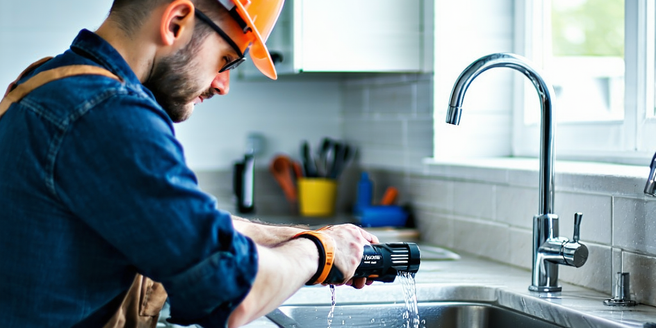Reducing Home Repair Bills

Understanding Common Household Repairs
Routine household repairs can sometimes be daunting, but understanding them is crucial. Plumbing leaks, electrical issues, and basic structural damage are among the most common repair needs. By identifying these issues early, homeowners can prevent extensive damage. Start by regularly checking for signs of wear and tear in frequently used areas such as kitchens and bathrooms. Familiarize yourself with household systems, learning how to shut off water valves or reset circuit breakers to manage emergencies temporarily. Home improvement workshops and online tutorials are excellent resources for deepening your understanding of common repairs. By gaining knowledge and confidence in addressing these matters, you can efficiently manage minor repairs and avoid unexpectedly high costs. Prioritizing consistent inspections and timely interventions is key to maintaining a safe and functioning home environment.
Prioritizing Maintenance to Prevent Costs
Regular maintenance is an investment that pays off by preventing significant repair costs. Prioritizing tasks such as gutter cleaning, roof inspections, and heating system check-ups can help identify potential issues before they escalate. Establish a maintenance schedule, dedicating time each season for specific tasks. Creating checklists for different home areas ensures nothing is overlooked. Being proactive in maintenance extends the life of household systems and appliances, ensuring they run efficiently. Embrace the habit of routinely checking for leaks, drafts, or unusual noises, and address them promptly. A little effort in maintaining your home consistently can prevent minor issues from turning into major, costly repairs. Ultimately, a well-maintained home retains its value better and offers peace of mind, knowing that you are less likely to face exorbitant repair bills unexpectedly.
DIY Techniques for Simple Fixes
Undertaking simple repairs can significantly reduce costs, and many fixes are easily manageable with a bit of know-how. Common tasks like unclogging drains, patching small wall holes, or fixing leaky faucets do not always require professional intervention. Start by equipping yourself with basic tools such as a plunger, screwdriver set, and a wrench. Online tutorials and home repair books offer step-by-step guidance for various DIY projects. Remember to follow all safety protocols and start on small projects to build your confidence. Additionally, keep a small stock of essential materials like nails, sealants, and adhesives. Tackling manageable repairs as they arise not only saves money but also provides self-reliance. With practice, you’ll gain the skills and understanding necessary to handle more intricate tasks, further aligning with your goal of reducing home repair expenses.
Choosing Cost-Effective Materials
When it comes to home repairs or renovations, selecting cost-effective materials can lead to substantial savings. Research and compare the durability and cost of materials required for your projects. Consider alternatives that can offer long-lasting results without breaking the bank. For instance, laminate flooring can be a more affordable yet durable option compared to hardwood. Opt for recycled or eco-friendly materials which can be cheaper and offer tax incentives. Buying in bulk can also cut costs, especially for frequently used items like paint or tiles. Assess the required durability and aesthetic value against your budget constraints, allowing for flexibility where necessary. By making informed choices in material selection, you can complete your projects efficiently and economically. The key is to balance quality and affordability, ensuring long-term savings and satisfactory outcomes.
Knowing When to Hire a Professional
While DIY can be cost-saving, certain situations necessitate professional expertise. Recognizing when to call in a professional can prevent exacerbating repair issues, leading to more significant damage and costs. Projects involving structural changes, electrical wiring, or extensive plumbing should generally be handled by licensed professionals. Attempting complex repairs without proper expertise may result in safety hazards, code violations, or poor workmanship. Obtain estimates from reputable contractors and compare them against the potential cost of doing it yourself, considering time, complexity, and required skills. Hiring a professional ensures adherence to safety standards and guarantees quality work, saving you from future repairs caused by inadequacies. Making this decision involves evaluating the project’s complexity and your capabilities realistically. By knowing your limits, you can make informed decisions, ultimately protecting your home and your financial interests.
Leveraging Tax Credits and Insurance Claims
Financial aids such as tax credits and insurance claims can significantly offset repair and renovation expenses. Tax credits are available for energy-efficient improvements like solar panel installation or enhancing insulation. Keeping detailed records of repairs and acknowledging applicable credits during tax filing can lead to substantial savings. Additionally, homeowners’ insurance policies may cover specific damage repairs due to unforeseen events like storms or accidents. Understanding your policy’s terms and promptly filing claims ensures you receive proper compensation. Before undertaking repairs, consult with your insurance agent to confirm coverage and necessary documentation. Being informed about available financial relief aids in minimizing out-of-pocket expenses, allowing you to tackle repairs without straining your budget. Effectively leveraging these resources involves staying organized and proactive in understanding your financial options, thus aiding in maintaining and repairing your home more cost-efficiently.